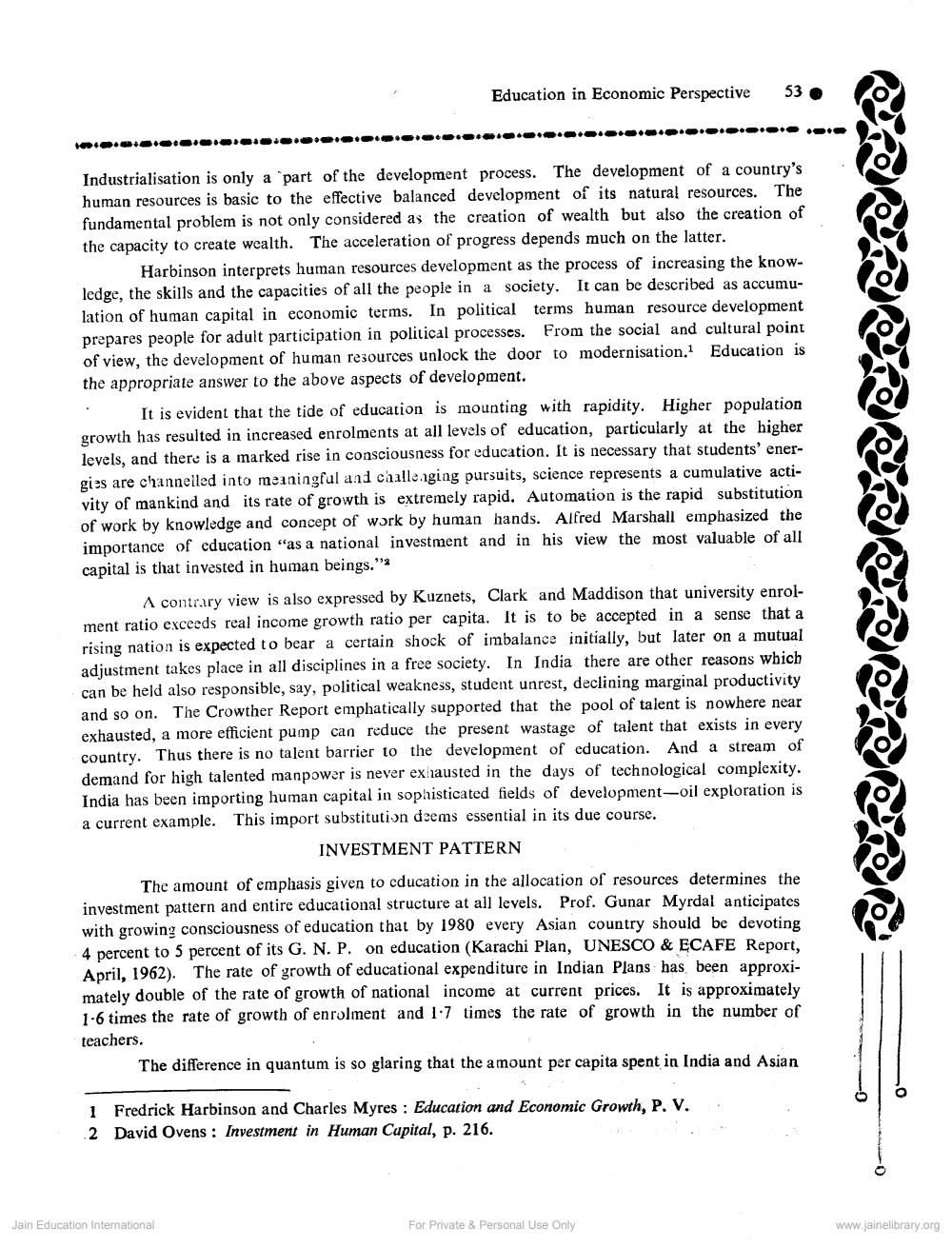Book Title: Education in economic perspective Author(s): B L Dhakad Publisher: Z_Kesarimalji_Surana_Abhinandan_Granth_012044.pdf View full book textPage 5
________________ Education in Economic Perspective 53 IOGIO.O.O.QIQI.IO.. ..........G .................. . ... Industrialisation is only a part of the development process. The development of a country's human resources is basic to the effective balanced development of its natural resources. The fundamental problem is not only considered as the creation of wealth but also the creation of the capacity to create wealth. The acceleration of progress depends much on the latter. Harbinson interprets human resources development as the process of increasing the knowledge, the skills and the capacities of all the people in a society. It can be described as accumulation of human capital in economic terms. In political terms human resource development prepares people for adult participation in political processes. From the social and cultural point of view, the development of human resources unlock the door to modernisation. Education is the appropriate answer to the above aspects of development. It is evident that the tide of education is mounting with rapidity. Higher population growth has resulted in increased enrolments at all levels of education, particularly at the higher levels, and there is a marked rise in consciousness for education. It is necessary that students' energies are channeiled into meaningful and challenging pursuits, science represents a cumulative activity of mankind and its rate of growth is extremely rapid. Automation is the rapid substitution of work by knowledge and concept of work by human hands. Alfred Marshall emphasized the importance of education was a national investment and in his view the most valuable of all capital is that invested in human beings." A contrary view is also expressed by Kuznets, Clark and Maddison that university enrolment ratio exceeds real income growth ratio per capita. It is to be accepted in a sense that a rising nation is expected to bear a certain shock of imbalance initially, but later on a mutual adjustment takes place in all disciplines in a free society. In India there are other reasons which can be held also responsible, say, political weakness, student unrest, declining marginal productivity and so on. The Crowther Report emphatically supported that the pool of talent is nowhere near exhausted, a more efficient pump can reduce the present wastage of talent that exists in every country. Thus there is no talent barrier to the development of education. And a stream of demand for high talented manpower is never ex austed in the days of technological complexity. India has been importing human capital in sophisticated fields of development--oil exploration is a current example. This import substitution deems essential in its due course. INVESTMENT PATTERN The amount of emphasis given to education in the allocation of resources determines the investment pattern and entire educational structure at all levels. Prof. Gunar Myrdal anticipates with growing consciousness of education that by 1980 every Asian country should be devoting 4 percent to 5 percent of its G. N. P. on education (Karachi Plan, UNESCO & ECAFE Report. April, 1962). The rate of growth of educational expenditure in Indian Plans has been approximately double of the rate of growth of national income at current prices. It is approximately 1-6 times the rate of growth of enrolment and 1.7 times the rate of growth in the number of teachers. The difference in quantum is so glaring that the amount per capita spent in India and Asian 1 Fredrick Harbinson and Charles Myres : Education and Economic Growth, P. V. 2 David Ovens : Investment in Human Capital, p. 216. Jain Education International For Private & Personal Use Only www.jainelibrary.orgPage Navigation
1 ... 3 4 5 6 7 8
